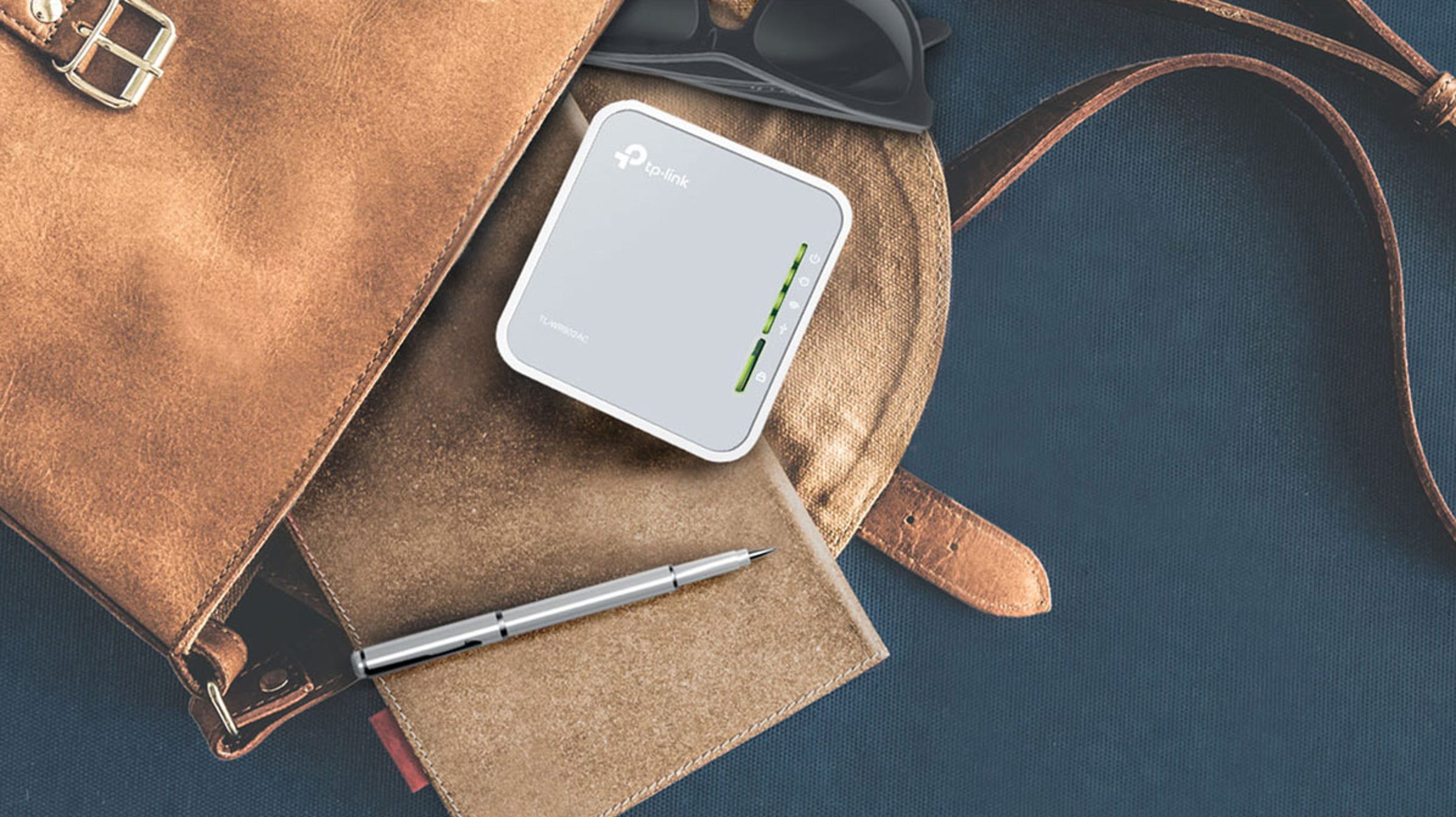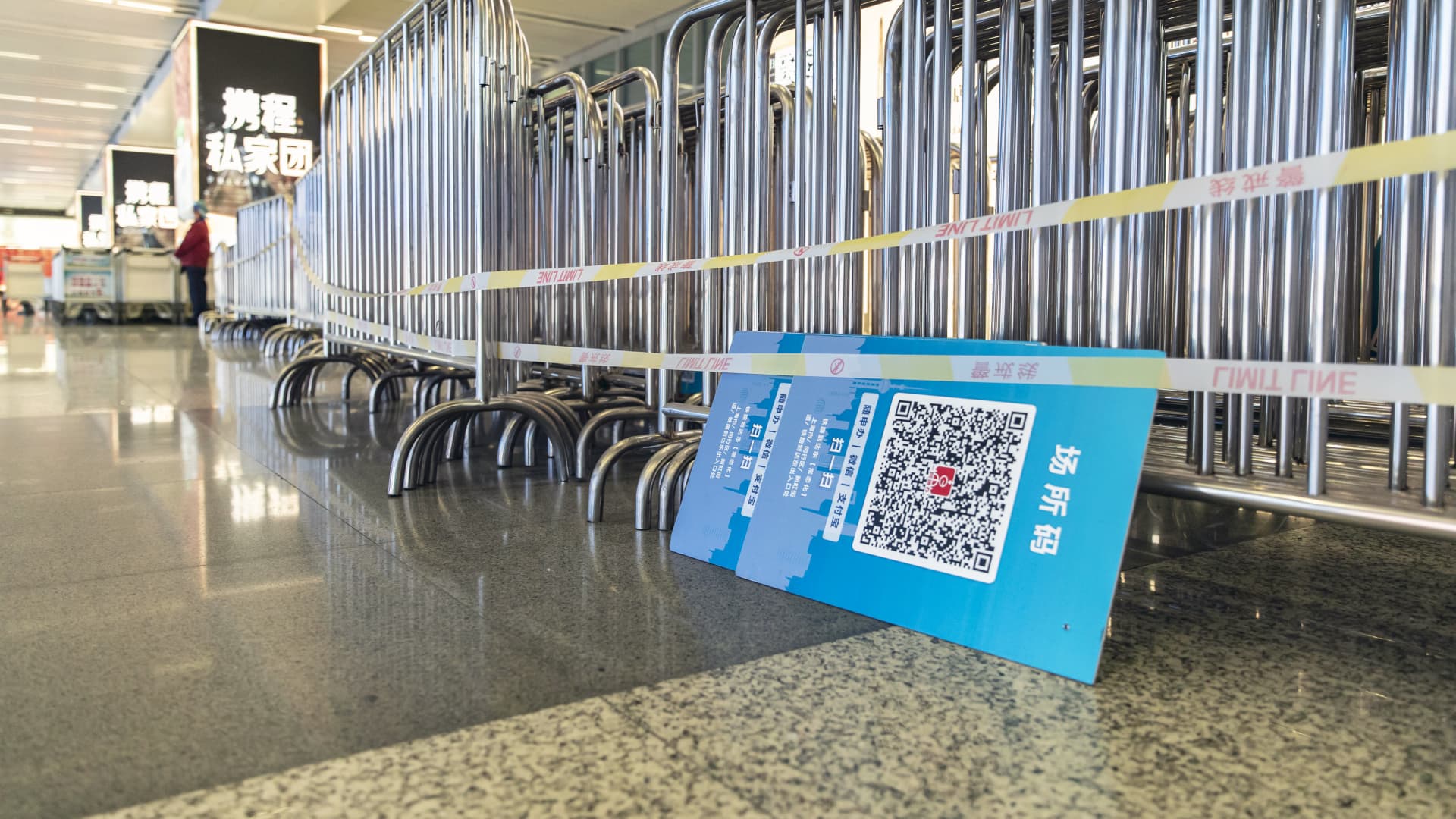[ad_1]

You might not have “travel router” on your vacation packing list, but after reading this article, you just might. Here’s why we always pack a router with us when we’re headed to a hotel.
What’s a Travel Router?
A travel router is a small network router designed with an emphasis on portability and use in-the-field. While you could, in theory, use a travel router as an internet router in your home, it’s not intended for that.
Instead, travel routers are meant to link together a smaller number of devices all congregated fairly close together. Think, your laptop and phone, your kids’ tablets, and maybe even a streaming stick in a hotel room—not all those things plus a pile of computers, smart devices, and such spread out across your whole home.
They typically have a very small form factor, the size of a portable battery pack or even smaller. Speaking of that, many of them are portable battery packs, so you can use them to charge your phone while you travel in addition to their router function.
Further, unlike the router you have at home, travel routers UI elements and even physical toggles that make it easy to quickly switch them between functions like router mode, hotspot mode, repeater mode, and so on.
That last part is crucial. You want a travel router that can easily connect to the hotel’s internet in different and reliable ways. In some hotels, you can plug the travel router directly into a courtesy Ethernet connection in your room, which is easy peasy.
In other hotels, there’s no physical internet connection, and you have to connect the travel router to the hotel’s Wi-Fi and use it in hotspot mode, where it captures the Wi-Fi connection, and then all your local devices connect to the travel router instead of the hotel’s Wi-Fi system.
Why Use a Travel Router In a Hotel?
You might be thinking, “Well, that’s all very fascinating, but I have no idea why I would go to the trouble?” And that’s certainly a fair question to have on your mind if you’ve never considered packing a router (no matter how small it might be) along with your toiletries and phone charger.
Historically, one of the best reasons to pack a travel router was that many hotels didn’t have Wi-Fi (they only had an Ethernet port in the room for business travelers to plug in their laptops).
Later, when hotels started to get Wi-Fi, they had frustrating policies like only one or two devices per guest/room were allowed on the network. Even today, some hotel Wi-Fi systems still have such rules.
When you use a travel router, you can “log in” just the travel router to the hotel’s system so, as far as they are concerned, there is only one device in the room. All the traffic of the other devices passes through the travel router.
Speaking of device traffic, you can also leverage the travel router to increase your privacy. Most travel routers support basic VPN protocols like PPTP or L2TP, and the more advanced ones support OpenVPN and WireGuard.
That makes it simple to tunnel right from your room to a third-party VPN or right back to your corporate or home VPN server. It also makes it easy to transfer files securely between your devices as the file transfer is happening over the micro network you set up, and the files never pass through the hotel’s infrastructure in any way.
It also makes it much easier to use your devices in the fashion you’re accustomed to. You could set your travel router’s Wi-Fi credentials to match your home network’s Wi-Fi credentials, for example. Not only does that make it dead simple to log in when you get to your hotel (as your phone and laptop already know the way “home”), but you can even toss your Chromecast or favorite streaming stick into your bag and use it in your hotel room. Forget the stupid “smart” TV interface hotels have, enjoy your streaming services the way you want without the lag.
Which Travel Router Should You Get?
Above all else, when you’re shopping for a travel router (whether you pick one of our suggestions or forge out on your own to do some research), you need this feature: captive portal connectivity.
You know how when you first connect to a hotel’s Wi-Fi there is usually a pop-up page where you accept the terms and conditions and/or login with your name and room number? That’s the portal. You need a router that “capture” that exchange and mimics your initial login device (like your iPhone).
All of our picks below support easy captive portal exchanges, which makes the setup when you first get to your hotel room a breeze. Without that feature, you’re left manually cloning your original login device’s MAC address which usually works but can be hit or miss.
One of the most popular options on the market is the TP-Link N300 Nano Router. It’s a steal at around $30, but it’s starting to show its age.
It only supports 802.11n (Wi-Fi 4) on the 2.4 GHz band. But for only ten bucks more, you can jump from the N300 Nano Router to the TP-Link AC750 Nano Router.
TP-Link TL-WR902AC AC750
It’s tiny, inexpensive, and our all-around top pick for best travel router. For most folks, it’s the easiest solution.
The upgraded model features dual-band Wi-Fi, 802.11AC (Wi-Fi 5), and a really convenient switch on the side that makes it dead simple to change modes without logging into the router.
While we love the TP-Link Nano lineup, especially the newest models, and think they are the best fit for just about everyone, there are a few other options to consider.
If you want more advanced VPN solutions, you’ll need to step beyond the TP-Link offerings and consider something like the GL.iNet GLMT300N—it’s roughly equivalent to the TP-Link N300 Nano Router but runs the popular OpenWRT router firmware and supports both OpenVPN and WireGuard.
And if you want a beefy upgrade over the TP-Link AC750 Nano Router consider the GL.iNet GL-A1300.
GL-iNet GL-A1300
For power users that want passthrough connectivity for Ethernet devices and advanced VPN services like WireGuard, this travel router delivers.
It also runs OpenWRT firmware and robust VPN support like its smaller sibling, but includes two additional Ethernet ports, support for many more Wi-Fi devices, and more.
But whichever of our picks you go with, you’ll become the master of your Wi-Fi destiny when you’re on the road. Forget cruddy hotel Wi-Fi or frustrating Wi-Fi rules. Plug in your own router and go. And hey, if you’re in the upgrade mood, here are some other travel gadget upgrades worth looking at.
[ad_2]
Source link





